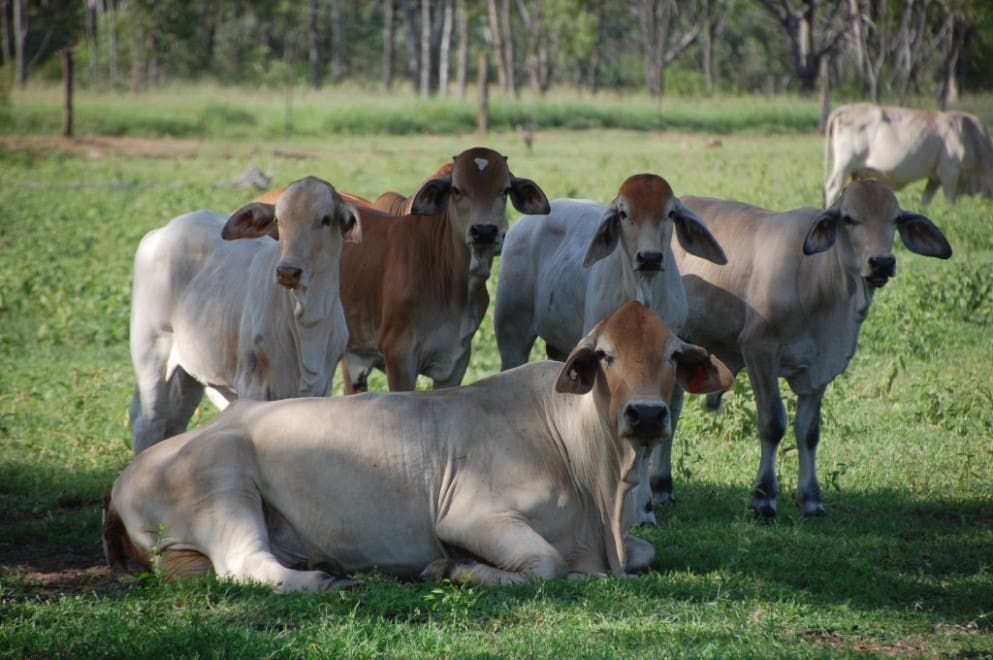
SELECTION decisions, for both new sires or for the retention of breeding females, require producers to consider a range of traits and characteristics.
Angus Australia in collaboration with the Meat & Livestock Australia Donor Company recently completed a project called “Enhancing technology adoption across the Angus genetic improvement pipeline.”
The study, which started in 2018 with the final report published in November last year, revealed several insights into the selection criteria of producers, including those who used breeds other than Angus and the relative importance placed on them in the selection decision process.
Consistently, temperament was ranked as the most important criteria, surpassing even genetic improvement as the key selection trait among those producers contributing to the data.
There are many reasons for the focus producers have placed on temperament.
Most are focussed on the direct influence temperament has on areas that include safe handling and reduced stress for both handlers and livestock as well as improved eating quality outcomes. Temperament also has a significant impact on production and herd performance, particularly in the breeding herd.
However this relationship is perhaps more complex than many producers may appreciate.
At last year’s Northern Beef Research Council update, a keynote paper presented by David G. Riley and colleagues from Texas A&M University, titled “Genetics of Cow Temperament at the Time of Calving,” offered some key insights on the genetics and environmental influences on cow temperament, and the implications these factors have on productivity.
The Texas A&M team investigated the genetic and environmental components of temperament, specifically during the calving period, and how it correlates with reproductive and productivity traits.
The research utilised a population of Nellore x Angus crossbred cattle, focusing on full-sibling F2 to F6 generations. Nellores are a larger framed Brazilian Bos Indicus derivative with distinctive white hides. The trial animals were bred between 2003 and 2023 through embryo transfer, providing a controlled population for studying temperament and genetic traits.
By separating cattle into distinct herds and carefully managing breeding practices, the researchers aimed to minimise in-breeding, although they noted an unavoidable increase in in-breeding in later generations.
Cows were evaluated based on their temperament during calving, with scores assigned on a scale of 1 (very calm) to 5 (very aggressive). In total, 4337 records of temperament were collected from 946 cows over a 17-year period.
The researchers used animal models to assess the heritability of temperament and its correlation with various productivity traits, such as calving rate, weaning rate, and cow and calf weight.
Key Findings: The genetics of temperament
The first notable finding from the study was the heritability of temperament.
Heritability refers to the proportion of a trait that can be attributed to genetic factors, and in this study, cow temperament at the time of calving was estimated to have a heritability of 0.23.
This suggests that while genetics plays a role, environmental factors are equally – if not more – important in shaping a cow’s temperament. The study also detected a significant permanent environmental influence, indicating that experiences early in life, particularly from maternal interactions, might affect a cow’s temperament later in life.
A genome-wide association study (GWAS) revealed two specific genetic markers on chromosome 4 associated with cow temperament. The researchers found that these markers were located near the COBL gene, which is involved in neuron structure.
This suggests a possible link between temperament and nervous system function, providing a deeper understanding of the biological mechanisms that could influence behaviour in cattle.
Temperament and reproductive performance
Perhaps the most surprising and counter-intuitive finding was the relationship between temperament and reproductive success.
The general assumption in cattle breeding is that cows with calmer temperaments tend to have higher reproductive rates, as they are easier to manage and less likely to exhibit stress-related behaviours.
However the study revealed the opposite: more docile cows had lower reproductive and productivity outcomes compared to their more aggressive counterparts.
Specifically, cows with the highest temperament scores (indicating more aggression) had better calving and weaning rates. For example, cows with a temperament score of 1 had an average calving rate of 78pc, while cows with a score of 5 had a calving rate of 88pc. Weaning rates followed a similar pattern, with calmer cows showing lower success rates in raising calves to weaning age.
This raises important questions about the relationship between temperament and maternal instinct.
One possible explanation is that cows with worse temperament scores may have stronger maternal instincts, which could translate into higher reproductive success. Their heightened alertness and responsiveness during calving could be an evolutionary advantage in protecting their offspring, resulting in better outcomes for both the calf and cow.
Environmental influences on temperament
Another key finding from the study was the strong influence of environmental factors on cow temperament.
In addition to genetic inheritance, a cow’s experiences, particularly early in life, were found to play a significant role in shaping temperament. The study suggested that cows may acquire behavioural traits from their maternal environment – an observation supported by the fact that cows with similar maternal environments tended to display similar temperaments.
Furthermore, while the researchers tried to account for environmental factors such as weather, temperature, and calving season, they found no significant correlations between these factors and temperament.
However they noted that cows calving in warmer months or under different environmental conditions might show variations in behaviour, although further research is needed to clarify this.
Implications for Cattle Breeding and Management
The findings of this study have important implications for cattle breeding and management practices.
While it is often assumed that selecting for more docile cows will lead to better productivity, the study challenges this notion. Instead, it suggests that temperament is more complex, and selecting for extreme docility might lead to lower reproductive success.
Breeding strategies may need to balance temperament with other traits such as maternal instinct and reproductive ability. This could involve selecting for moderate temperament scores, where cows are calm enough for safe handling but not so docile that their reproductive performance is compromised.
The genetics of cow temperament at calving is a multi-faceted trait influenced by both genetic and environmental factors. The study by Riley and colleagues highlights the complexity of temperament, revealing that more aggressive cows may have reproductive advantages over their calmer counterparts.
Given the impact environmental influences have on temperament, many producers may have to re-evaluate their own methods of handling and management to ensure they achieve the best outcomes across all aspects of their production system.
 Alastair Rayner is the General Manager of Extension & Operations with Cibo Labs and Principal of RaynerAg. Alastair has over 28 years’ experience advising beef producers & graziers across Australia. He can be contacted here or through his website www.raynerag.com.au
Alastair Rayner is the General Manager of Extension & Operations with Cibo Labs and Principal of RaynerAg. Alastair has over 28 years’ experience advising beef producers & graziers across Australia. He can be contacted here or through his website www.raynerag.com.au

Very useful information. Send my regards to my friend Dr. David Riley.
Thank you very much. I used to work on a Nebraska Sand Hills’s during the calving season of an Angu herd, and was given the indication to signal those aggressive mothers that would not be happy when I had to lift the recently born calf from the snow, to carry it on my arms, followed by its dam, to a box to be preserved from the early spring (February/March) cold and teach it to suck the colostrum. The following summer they were culled. On recent years many breeders have been making use of docility scores to include into their selection plans. Send my special regards to my friend Dr. David Riley.